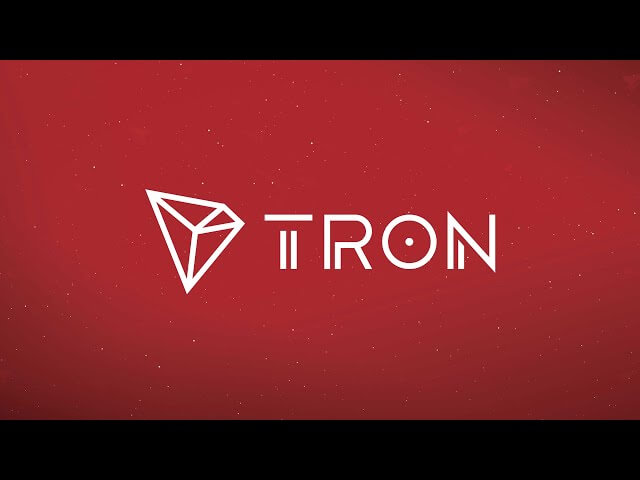TRON (TRX)
Justin Sun’s Vision for a Decentralised WebOriginally another Ethereum-based project, TRON is now running on its own decentralised, open-source blockchain. Tronix (TRX), the project’s native cryptocurrency, is one of the top 20 cryptos. In this guide we’ll tell you everything you need to know about TRON and TRX.

What is TRON (TRX)?
Founded by Chinese entrepreneur Justin Sun in March 2014, TRON is an ambitious project aimed at decentralising the Web. It is a decentralised, smart-contract-capable blockchain network, that facilitates decentralised applications. Since 2017, TRON has been supervised by the Singapore-based TRON Foundation – which raised US$70M through an ICO (initial coin offering).
Originally Ethereum-based, in June 2018 it migrated to its own peer-to-peer blockchain network. In mid-2018, the TRON Foundation completed its acquisition of the well-known peer-to-peer file-sharing service BitTorrent. Just months later, in February 2019, BitTorrent itself launched its own token based on the TRON network.
In December 2021, Sun stepped down from his role as CEO of the TRON Foundation, and management of the project was transferred to TRON DAO – a non-profit decentralised autonomous organisation.
| Did you know? TRON founder Justin Sun was formerly Ripple’s chief representative in China before the country banned cryptocurrencies. Source: Decrypt |
TRON Basics
Many observers have commented that TRON is essentially a copy of the Ethereum network, which it used to run on. Indeed, it is extremely similar. Tronix (TRX) can be subdivided into smaller units, the smallest of which is called SUN, after the project’s founder. There are 1,000,000 SUN in 1 TRX. As with ETH on the Ethereum network, TRX is used to pay transaction fees on the TRON network.
TRON Blockchain
TRON uses a Delegated Proof-of-Stake (DPoS) consensus mechanism. This evolved from the more common Proof-of-Stake mechanism, as used by Ethereum. DPoS sees token holders elect 27 nodes to act as “super representatives” and process transactions. Each token entitles its holder to one vote. Over 100 million votes are required to be eligible to become a super representative. Integrity is guaranteed by the fact that the voting system is ongoing, so if a super representative node acts maliciously or badly, it will be replaced.
The network itself consists of three layers; one for storage, a core layer, and an application layer. The TRON Foundation manages the distribution of network resources among TRX token holders, using a complex pricing mechanism taking into account factors like energy consumption and bandwidth. Like Ethereum, TRON boasts a decentralised virtual machine capable of executing programs using a distributed network of nodes.
TRX Issuance and Staking
TRX tokens cannot be mined but can be staked. Those staking tokens help secure the network through validation and governance. They are rewarded with TRX.
TRX Supply
The total supply of TRX is capped at 92 billion.
TRON Adoption & Usability
There’s no denying that TRON can be divisive in the crypto community. From people criticising it as nothing more than an Ethereum ‘knock-off’ to others taking issue with the personality of its founder, Justin Sun. The project has also been sullied, in some eyes, by its popularity in the gambling and pornography world. But, there’s also no denying that, by late 2022, according to CoinGecko, TRX was the world’s 16th biggest crypto by market capitalization, at just over US$5.7B.
Thanks to its low fees and fast transactions, the TRX cryptocurrency is very usable for everyday payments and is accepted by a growing number of retailers and service providers. Meanwhile, TRON’s ability to support smart contracts makes it ideal as a base for decentralised applications.
TRON Fees & Speed
Compared to many blockchain networks, TRON has extremely low fees – typically between $0.20 and $0.35 per transaction. The exact fees are calculated on bandwidth and energy used, so some smart contracts can cost more. There’s also a daily allocation of free bandwidth that users can access. Compared to most networks, transactions are also very fast, with the platform said to be capable of around 2000 transactions per second.
TRON Security and Safety
Although questions have been raised in the past about just how secure TRON’s DPoS network actually is, in practice, it has proven itself robust. But, as always, your TRX can still be vulnerable to hackers and scammers, especially when interacting with third-party platforms like exchanges.
Security and safety tips:
- Don’t leave your TRX on exchanges. Use exchanges for buying and selling only. Always transfer your crypto to a local wallet for short-term storage.
- For long-term storage, keep your crypto in a hard wallet.
- Always keep your wallet keys in multiple safe places – they cannot be recovered.
- Never tell anyone about your crypto holdings. No matter how secure your storage is, if you or your loved ones are physically threatened, you’ll probably hand over your personal keys.
TRX Volatility
In the years since its launch, TRX has plotted the volatile price chart, typical of most cryptocurrencies. According to CoinGecko, an all-time low of $0.002 was reached on 12 November 2017, while its all-time high of $0.20 was achieved on 5 January 2018. At the time of writing, in late October 2022, TRX was trading at about $0.06.
Final Word on TRON (TRX)
Despite Justin Sun stepping away from TRON, and the TRON Foundation handing over control to a DAO, at the end of 2021, the project is still very much associated with its founder. This may hold it back from making any significant gains in the short term, but developers keep building and there’s no major security failure, TRON and TRX could well remain a major force for decentralisation as the Web3 future emerges.

